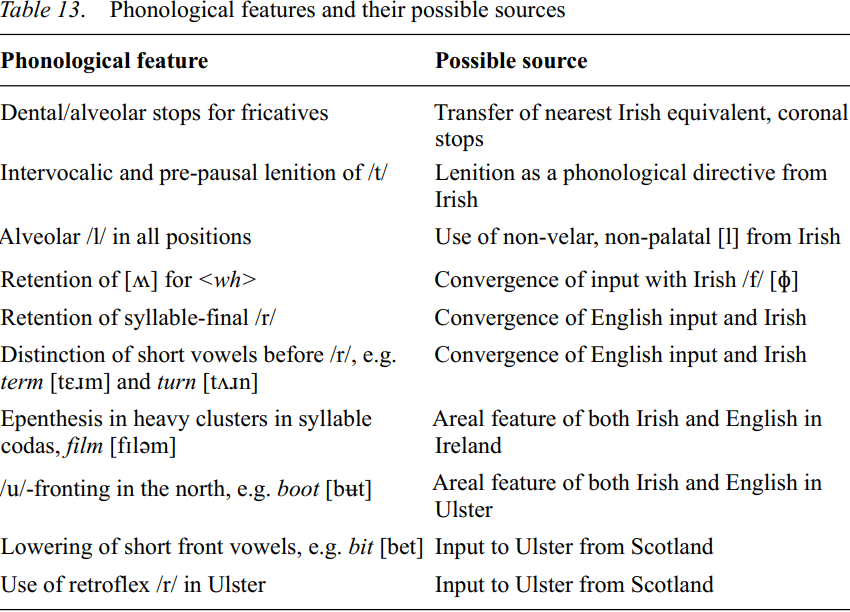


 Grammar
Grammar
 Tenses
Tenses
 Present
Present
 Past
Past
 Future
Future
 Parts Of Speech
Parts Of Speech
 Nouns
Nouns
 Verbs
Verbs
 Adverbs
Adverbs
 Adjectives
Adjectives
 Pronouns
Pronouns
 Pre Position
Pre Position
 Preposition by function
Preposition by function 
 Preposition by construction
Preposition by construction
 Conjunctions
Conjunctions
 Interjections
Interjections
 Grammar Rules
Grammar Rules
 Linguistics
Linguistics
 Semantics
Semantics
 Pragmatics
Pragmatics
 Reading Comprehension
Reading Comprehension|
Read More
Date: 2024-03-28
Date: 2024-02-15
Date: 2024-05-14
|
In the history of Irish English studies, the pendulum of opinion concerning the role of contact in the genesis of these forms of English has swung back and forth. Initially writers like Joyce, P. L. Henry and, to a lesser extent, Hogan assumed that every feature which had a parallel in Irish was of Irish origin. This stance has been labelled the substratist position and came under heavy fire in the mid 1980’s most noticeably in John Harris’ (1984) influential article. The retentionist standpoint, which saw the input varieties of English in early modern Ireland as the source of features hitherto accounted for by contact, came into vogue and was represented by various scholars. But in the 1990’s the pendulum moved more to the centre with the gradual acceptance of contact as a source of specific features in Irish English (Hickey 1995), not for ideological reasons, as often previously, but due to a better understanding of the mechanisms of language transfer and language shift, not least due to authors on Irish English, such as Markku Filppula, taking on board the ideas of other linguists examining contact in general, expressed most clearly in the seminal monograph, Thomason and Kaufman (1988). Convergence became the new standard wisdom with contact and retention occupying places of equal standing in the history of Irish English. The following table offers suggestions for sources of key phonological features of Irish English.

|
|
|
|
"عادة ليلية" قد تكون المفتاح للوقاية من الخرف
|
|
|
|
|
|
|
ممتص الصدمات: طريقة عمله وأهميته وأبرز علامات تلفه
|
|
|
|
|
|
|
المجمع العلمي للقرآن الكريم يقيم جلسة حوارية لطلبة جامعة الكوفة
|
|
|